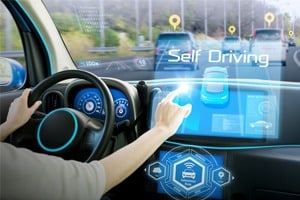
Technology is rapidly advancing every day and the car industry is no exception. From lane and speed maintenance to self-parallel parking, automation is beginning to greatly infiltrate the automotive industry. But while it may seem like these new added features make driving much safer, two new IIHS studies show just the opposite.
One study demonstrates that drivers are experiencing difficulty in understanding how these systems work. These automated features are creating a false sense of security, contributing to lower driver attentiveness. In fact, according to IIHS President, David Harkey, while this new level of automation has the potential to make things safer, it can also create added risk.
New automated systems are ranked at a Level 1 or 2, meaning that they are designed to assist the driver, but the driver still needs to remain actively engaged at all times. (Ordinary human-only driving ranks at a Level 0.)
Systems Negatively Impacting Driving Behavior
System names also seem to negatively impact driver behavior. With names like “autopilot,” drivers are depending upon their vehicle to serve as the eyes on the road rather than their own. Unfortunately, this has resulted in devastating consequences. In a previous blog, we discussed a Tesla driver in Florida dying after crashing into the side of a tractor-trailer while the car was engaged in Autopilot.
The second recent IIHS study utilized a 2017 Mercedes Benz E-Class with the Drive Pilot system in order to determine whether or not they understood the car’s display. Study participants were asked questions regarding the operating status of certain features, such as adaptive cruise control and lane centering. If any of these features were inactive, they were asked to explain why. Half of the participants were given a brief explanation of the display’s icons prior to use.
No Substitute for Training and Attentiveness
Although every participant understood why adaptive cruise control adjusted its speed, most did not understand why the system failed to detect a vehicle ahead of it – regardless of training. (This was due to distance.) While many in the training group could identify when lane centering was inactive, most of those who were not in that group struggled to do so.
In North Carolina, House Bill 469 became effective in December 2017, and sets regulations for autonomous vehicles, and enforces certain requirements necessary for legal operation. The law has also altered regulations already in existence in order to account for the operation of autonomous vehicles.
Although certain systems employ various tactics to alert the driver of when a feature is inactive, such as more understandable and obvious visual signals or audible alerts, interface-specific training or orientation when purchasing the vehicle may be the best bet to keep everyone safe on the road. There is no substitute for driver education and comprehension.
If you have been involved in an auto accident that was due to the negligence of others, call the experienced Motor Vehicle Accident Attorneys at Daggett Shuler at 800-815-5500.
Daggett Shuler Law – You Can Depend on Us

